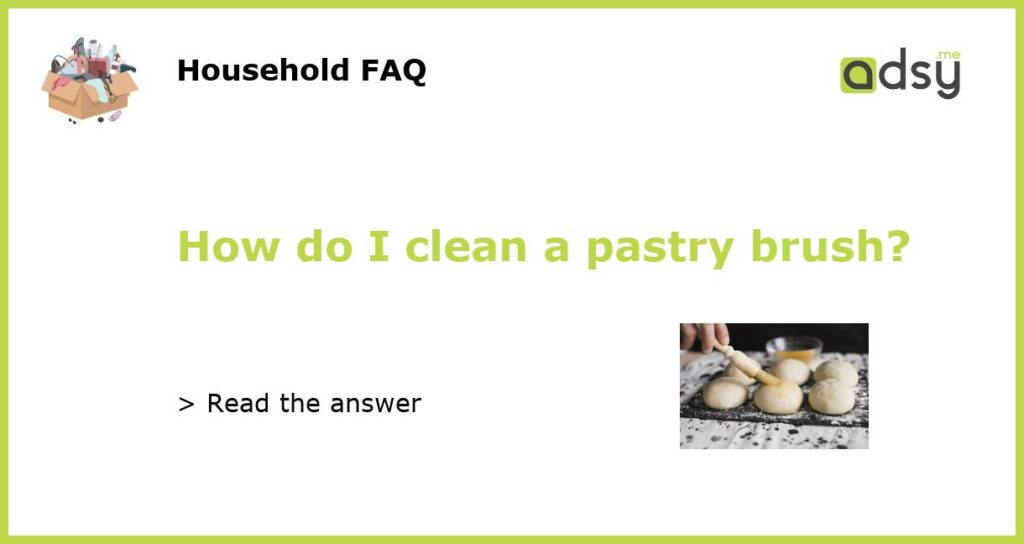Cleaning a Pastry Brush: The Basics
When it comes to keeping your pastry brush clean and in good condition, the key is to establish a regular cleaning routine. Here are some basic steps to follow:
- Gently remove any excess food or debris from the bristles by tapping the brush against the edge of a bowl or sink.
- Fill a bowl or sink with warm water and a small amount of mild dish soap.
- Swirl the brush in the soapy water, working the bristles to remove any remaining food particles or grease.
- Rinse the brush thoroughly under running water to remove any soap residue.
- Pat the bristles dry with a clean towel or paper towel.
- Allow the brush to air dry completely before storing or using it again.
Do’s and Don’ts of Pastry Brush Cleaning
While the basic cleaning process is straightforward, there are a few do’s and don’ts to keep in mind to ensure the longevity of your pastry brush:
- Do clean your pastry brush after each use to prevent the buildup of food particles, grease, and bacteria.
- Don’t use harsh chemicals or abrasives to clean your brush, as they can damage the bristles.
- Do use a gentle dish soap or a designated brush cleaner to remove any stubborn stains or residue.
- Don’t soak your pastry brush for extended periods of time, as excessive water exposure can cause the bristles to loosen or warp.
- Do store your pastry brush with the bristles facing up or in a separate compartment to prevent them from getting misshapen or bent.
Removing Stubborn Stains and Odors
If your pastry brush has stubborn stains or odors that regular cleaning doesn’t seem to remove, there are a few additional steps you can take:
- For grease stains, try applying a small amount of baking soda or cornstarch to the affected area to absorb the grease. Let it sit for a few minutes before rinsing.
- If your brush has a lingering odor, you can soak it in a mixture of equal parts vinegar and water for 15-20 minutes, then rinse it thoroughly.
- For particularly stubborn stains or odors, you can also try using a mixture of hydrogen peroxide and water. Soak the brush for 30 minutes, then rinse it well.
Deep Cleaning and Maintenance
While regular cleaning should suffice for most pastry brushes, there may be times when a deeper cleaning is necessary:
- If your brush has accumulated a significant amount of hardened or sticky residue, you can soak it in warm water with a small amount of baking soda overnight.
- Gently scrub the brush with a soft-bristle brush or toothbrush to remove any remaining residue.
- Rinse the brush thoroughly under running water and allow it to air dry completely.
- Once a year, it’s also a good idea to inspect your pastry brush for any signs of wear or damage. If the bristles are frayed or falling out, it may be time to replace the brush.
Additional Tips for Maintaining a Clean Pastry Brush
Here are a few additional tips to help you keep your pastry brush clean and in good condition:
- Use separate brushes for different types of foods, such as one for sweet dishes and another for savory dishes, to prevent flavor transfer.
- Consider investing in a silicone pastry brush, as they are generally easier to clean and more resistant to staining.
- If possible, avoid using your pastry brush on hot surfaces or directly in a hot pan, as this can cause the bristles to melt or warp.
- Regularly inspect the bristles for any signs of damage or wear, and replace the brush if necessary.






